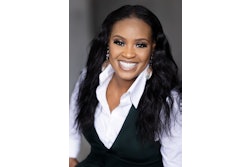Testing Your Diversity Knowledge
The following test was developed by Fred L. Pincus, an associate professor of sociology at the University of Maryland-Baltimore County, and author of the Test of Affirmative Action Knowledge and the co-editor of Race and Ethnic Conflict: Contending Views of Prejudice, Discrimination and Ethnoviolence.
1 It is well known that children from families in the upper income quartile (the richest 25 percent) are more likely to attend and graduate from college than children from the lowest quartile (the poorest 25 percent). According to recent data, young people from the upper income families were
A) Three times more likely to get a bachelor’s
degree than those from lower income families.
B) Almost 14 times more likely to get a bachelor’s
degree than those from lower income families.
C) More than 20 times more likely to get a
bachelor’s degree than those from lower income families.
D) None of the above.
2It is well known that Whites are much more likely to attend and graduate from college than are Blacks and Hispanics. In 1997, White young adults were
A) Twice as likely to have a bachelor’s degree
than comparable Blacks.
B) Almost three times as likely to have a
bachelor’s degree than comparable Hispanics.
C) Both of the above.
D) None of the above.
3If one compares the college graduation rates of males and females since the 1940s, female graduation rates have
A) Increased but are still lower than males.
B) Increased and have surpassed that of males.
C) Have stayed about the same.
D) Have fluctuated erratically.
4Of all students who enter two-year colleges
A) More than half transfer to a four-year
institution.
B) The percentage of students who transfer has
increased dramatically between 1980 and the
late 1990s.
C) Less than one-quarter receive any type of
degree or certificate from a two-year or a
four-year institution.
D) All of the above.
5According to data from the late 1990s
A) Men earn more bachelor’s degrees than
women in all racial groups.
B) Blacks and Hispanics make up about 20
percent of the population but earn only 12
percent of all bachelor’s degrees.
C) Although Black colleges account for 15
percent of all Black enrollment, they award only
10 percent of all bachelor’s degrees going to
Blacks.
D) The percentage of Asians with bachelor’s
degrees is slightly lower than the percentage of
Whites with bachelor’s degrees.
6During the 1995-96 academic year
A) Whites earned about half of the law and
medical degrees.
B) Males earned less than half of the law and
medical degrees.
C)Hispanics and Blacks, combined, earned
less than 5 percent of law and medical degrees.
D) Asians earned 6 percent of law degrees and
15 percent of medical degrees.
7The term ‘ethnoviolence’ is defined as an act, motivated by prejudice, that is intended to do physical or psychological harm to someone because of their group membership. The more than two dozen systematic studies on campus ethnoviolence have shown that
A) People of color and Whites have similar rates
of victimization.
B) The victimization rate for minority students is
very similar from campus to campus.
C) Most students report their victimization to
campus authorities.
D) Most ethnoviolent acts involve verbal rather than physical harassment.
8The first Black studies programs opened in the late 1960s. By the late 1990s
A) There were more Black studies programs than
at any time in American history.
B) More than half of all four-year colleges and
universities offer a major in Black studies
C) Black studies is one of the largest majors
for Black students.
D) None of the above.
9The first women’s studies program opened in 1969. By the late 1990s
A) The number of women’s studies programs has
increased to more than 700.
B) More than one-third of all four-year colleges
and universities offer a major in women’s
studies.
C) Most women’s studies faculty members have
full-time appointments in the women’s studies
department.
D) All of the above.
10 Using 1995 data
A) Women made up more than one-third of all
faculty in 1995.
B) White males made up less than half of all
faculty in 1995.
C) The percentage of Black faculty doubled
between 1980 and 1995.
D) All of the above.
1 B — Postsecondary Education Opportunity (Sept. 1998) separates 18-24 year-olds by family income quartiles. In 1996, the chances of an upper-income student receiving a bachelor’s degree by age 24 was 74 percent. The chances of a lower income student getting a bachelor’s degree was only 5.4 percent. This means that the upper income student is almost 14 times more likely to get a bachelor’s degree than the lower income student.
2 C — Postsecondary Education Opportunity (June 1998) provides data for the percentage of 25-29 year-olds with bachelor’s degrees. In 1997, 29 percent of Whites, 14.4 percent of Blacks and 10 percent of Hispanics had bachelor’s degrees. That puts the White/Black ratio at slightly more than 2-to-1 and the White/Hispanic ratio at slightly less than 3-to-1. Unfortunately, data for Asian and Native Americans was not discussed.
3 B — According to Postsecondary Education Opportunity (June 1998), the proportion of women who have bachelor’s degrees has increased steadily since 1940. For males, bachelor’s degree attainment increased from 1940 to 1976, then dropped off and began to rise again in the mid 1990s. Since 1991, the percentage of women with bachelor’s degrees has been slightly higher than the percentage of males. In 1997, 29.3 percent of women 25-29 years-old had a bachelor’s degree compared to 27.5 percent of their male peers.
4 C — According to The American Community College, Third Edition (1996), by Arthur M. Cohen and Florence B. Brawer, only 21-to-25 percent transferred within four years of enrollment in 1989, the most reliable data. No more than 10-to-15 percent of students who begin at two-year colleges ever get a bachelor’s degree.
5 B — According to Minoities in Higher Education: 1997-98 (1998), by Deborah J. Wilds and Reginald Wilson, in all racial groups, women are more likely to earn bachelor’s degrees than men. Black colleges award 28 percent of the bachelor’s degrees going to Blacks. Asians are more likely than Whites to have a bachelor’s degree.
6 D — According to the Digest of Education Statistics, 1998. Whites earned 81 percent of the law degrees and 67 percent of the medical degrees. Males earned 57 percent of the law degrees and 55 percent of the medical degrees. Hispanics and Blacks, combined, earned 10 percent of the law degrees and 12 percent of the medical degrees.
7 D — According to Howard J. Erlich’s essay, titled “Campus Ethnoviolence,” in Race and Ethnic Conflict: Contending Views of Prejudice, Discrimination and Ethnoviolence (1999), minority victimization rates vary substantially from campus to campus — ranging from a low of 12 percent to a high of 60 percent. The median is 25 percent, which means that one out of four minority students is likely to experience ethnoviolence at least once during the academic year. The victimization rate for Whites is lower than for minorities and most victims do no report their victimization to campus authorities.
8 D — According to Johnnetta B. Cole’s essay, titled “Black Studies in Liberal Arts Education,” in Transforming the Curriculum: Ethnic Studies and Women’s Studies (1991), the number of Black studies programs peaked in the early 1970s at about 800 and then declined to 375 in 1990. According to The College Board’s Index of Majors and Graduate Degrees, 1999, 152 four-year institutions, less than 10 percent of the total, offer a Black studies major. According to the Digest of Education Statistics, 1998, less than 1 percent of Black students that received bachelor’s degrees in 1996 majored in Black studies. More than 20 percent of Black bachelor’s degrees went to students majoring in business administration.
9 A — The National Women’s Studies Association puts the number of programs in two- and four-year colleges at 710 in 1999. According to The College Board, 189 four-year institutions, less than 10 percent of the total, offer a bachelor’s degree in women’s studies. Most women’s studies faculty have joint appointments in women’s studies and another department.
10 A — According to Minorities in Higher Education: 1997-98 (1998), by Deborah J. Wilds and Reginald Wilson, males accounted for 65 percent of full-time faculty in 1995 and White males accounted for 57 percent. Blacks accounted for 5 percent of the faculty in 1995, up from 4.1 percent in 1985.
© Copyright 2005 by DiverseEducation.com


















